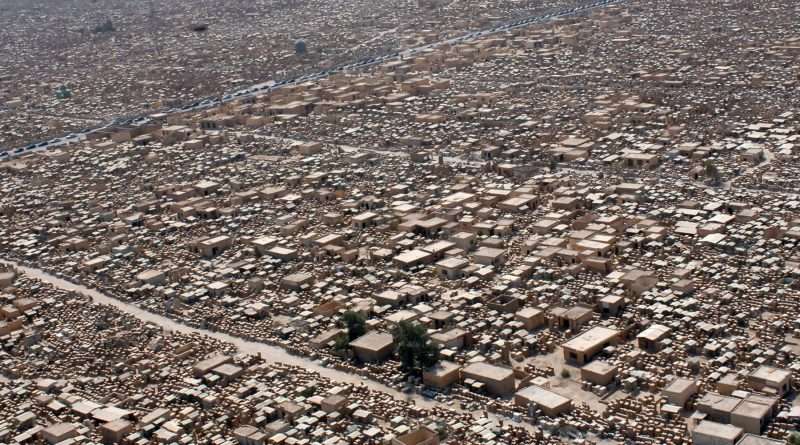Wadi al-Salam: The Largest Cemetery in the World
Resting along the banks of the sacred Polvar River, Wadi al-Salam Cemetery unfolds as a sprawling tapestry of faith and memory. Spanning over 1,485.5 acres in Najaf, this “Valley of Peace” has welcomed pilgrims, scholars, and rulers for centuries. In these winding alleys of tombs and crypts, the stories of six million souls converge—revealing a profound intersection of spirituality, history, and enduring hope.
Historical Backdrop
Wadi al‑Salam has served as Najaf’s primary necropolis for over 1,400 years. Burial practices in this valley trace back to pre-Islamic Mesopotamia, with Parthian and Sassanid influences. The site’s labyrinth of tombs reflects continuous interment—from early Shia pilgrims to modern war casualties—expanding dramatically during the Iran‑Iraq war and the 2003 conflict.
Religious Significance
Adjacent to the revered shrine of Imam Ali ibn Abi Talib, Wadi al‑Salam is sacred in Shia Islam. Many believe burial here confers spiritual proximity to the Imam and a place in paradise. Pilgrims from around the world choose this valley for their final resting place, reinforcing Najaf’s status as a major center of Shia scholarship and devotion.
Layout & Architecture
Wadi al‑Salam is a tapestry of catacombs, mausoleums, and family crypts. Many crypts hold multiple generations—some accommodating up to 50 burials. Tombstones and domes of baked brick, plaster, and tile cluster along winding pathways. The site is managed by the Shiite endowment, which maintains drainage systems, shaded arcades, and directional signage.
Socio‑Political Landscape
Despite its peaceful name, the cemetery has witnessed conflict. During insurgencies, its mausoleums served as insurgent hideouts. In 2003, Najaf’s battles for the shrine complex touched its edges. Today, it stands as both a sanctuary and a reminder of Iraq’s turbulent history, with war memorials interspersed among ancient tombs.
Global Recognition & UNESCO Nomination
In 2022, Wadi al‑Salam was submitted to UNESCO’s Tentative List for World Heritage status, acknowledging its cultural, religious, and historical significance. Each year, millions of pilgrims and visitors pay respects here, cementing its legacy as a truly global resting place.
Frequently Asked Questions
How can I visit Wadi al‑Salam Cemetery?
Visitors enter via the main gate near the Imam Ali shrine in Najaf. Local taxi or guided tours from Baghdad are common. Modest dress and respect for mourning rituals are required.
Is there an entrance fee?
No fee is charged for walking the cemetery. Fees apply only for private family crypts and certain guided services arranged via the Shiite endowment.
Can non‑Muslims enter the cemetery?
Yes. Non‑Muslims may visit respectfully, but prayer and burial rites are reserved for Muslims. Photography is allowed away from grieving families.
When is the best time to visit?
Autumn (Oct–Nov) and spring (Mar–Apr) offer mild temperatures (60–80 °F) and clearer skies. Pilgrim seasons around Ashura and Arbaeen are busiest and more crowded.
What should I know about burials here?
Family crypts are often purchased in advance. Burial ceremonies follow Shia customs, including washing (ghusl), shrouding (kafan), and recitations. The endowment oversees all interments.
What Did We Learn Today?
Wadi al‑Salam is more than a cemetery—it’s a living archive of faith, history, and resilience. From its roots in ancient Mesopotamia to its role in modern pilgrimage and conflict, this “Valley of Peace” embodies the enduring spirit of Najaf and Shia devotion. Visiting here offers a profound connection to millions of stories etched in stone.

